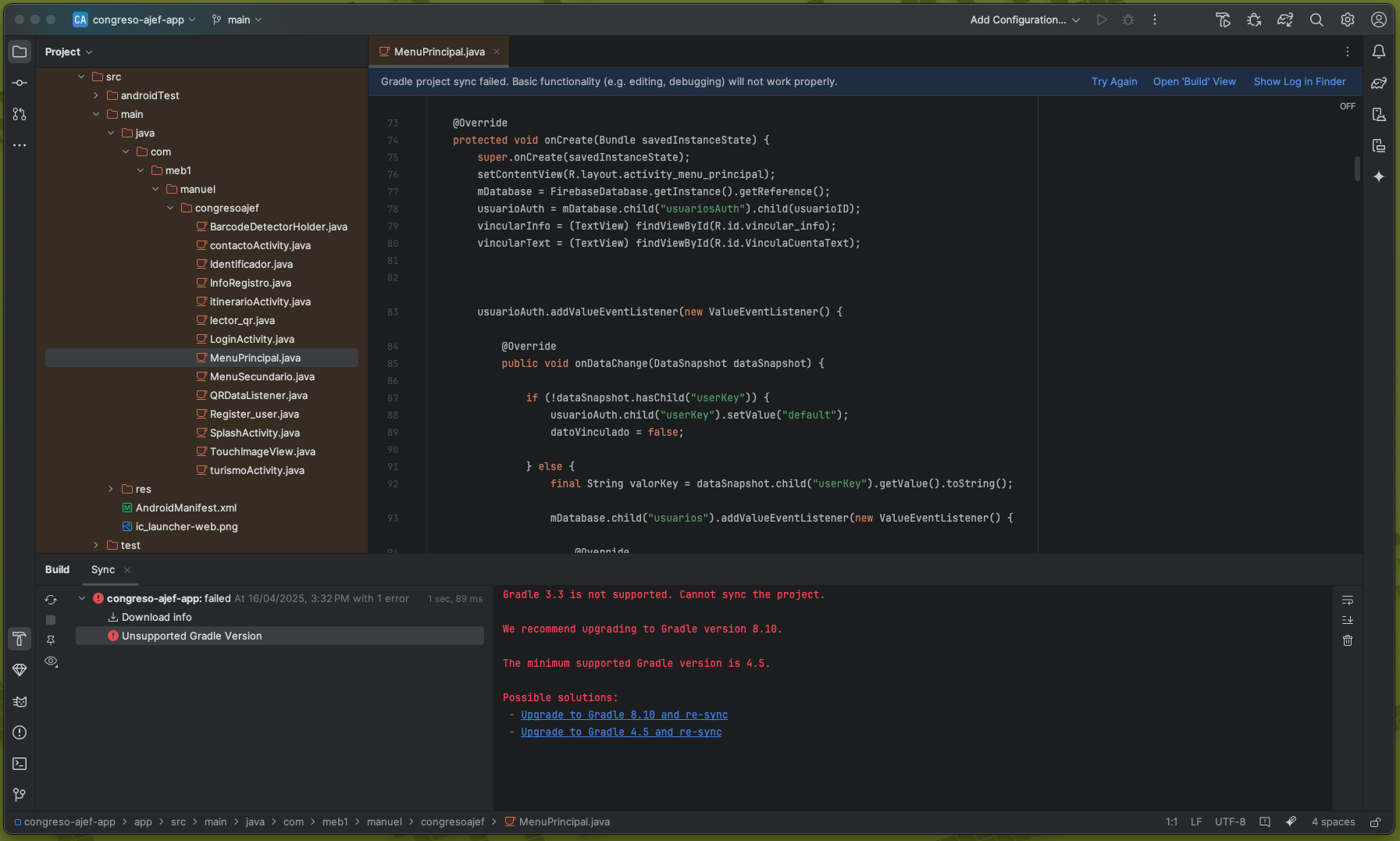Breathing New Life into My Old Android Apps — With Help from AI
Back in 2017, while I was finishing my civil engineering degree and working part-time at a construction company, I was also building Android apps.
It all started with a MacBook Pro my parents gifted me — a 13” 2012 model that I truly loved. I admired how it showed the battery status with LEDs on the side, and how fluid macOS felt. Coming from a Compaq laptop I had since 2008 (where I dual-booted Windows and Ubuntu), this MacBook felt like a dream.
Using it, I developed two Android apps that were actually used by people:
- One for the AJEF National Congress, a youth event where we needed to manage attendees, activities, and registration with QR code validation and Firebase as backend.
- Another for a local restaurant, where customers could place their orders via the app — years before delivery apps arrived in my hometown.
At the time, I was about to explore iOS development too. I had just gotten an iPad and was ready to learn Swift… but then something terrible happened.
One evening, I left my backpack inside my car while having dinner. Someone broke the window and stole it. Inside was my MacBook, my iPad, and the only copies of my Android projects. I didn’t use Git back then. Everything was stored on my Time Machine backup… which I couldn’t access anymore without a Mac.
My parents helped me buy a new laptop — an Asus Vivobook with Windows — so I could finish my studies. I started diving into CAD tools and VBA for automation in Excel, since it was practical and easy to share. I managed to complete my thesis, but my dreams of app development were paused.
Years passed.
In 2023, I finally got a refurbished 15” MacBook Pro (2019, Intel + Radeon) — the laptop I used to dream about when it was first released. I restored my old Time Machine backup… and there they were. My old app files. Most were outdated or incompatible, but they were alive again.
Now, with a Mac Studio M2 Max, I’m experimenting with LLMs, iOS dev, MLX, and cybersecurity tools. I run Kali Linux in a VM, and most of my work now happens inside macOS.
But recently, I decided to bring those old Android apps back — not just for nostalgia, but to see how far I can go using modern tools like Firebase Studio AI. Maybe I’ll even port one to iOS.
I don’t know how much I’ll need to update to get them working again, but it feels great to revisit the code I once lost.
It’s like reopening a time capsule… only now I have the tools, skills, and mindset to take it even further.
Trying to sync an Android project I built back in 2017. Gradle 3.3 is no longer supported — but the code is alive again.
